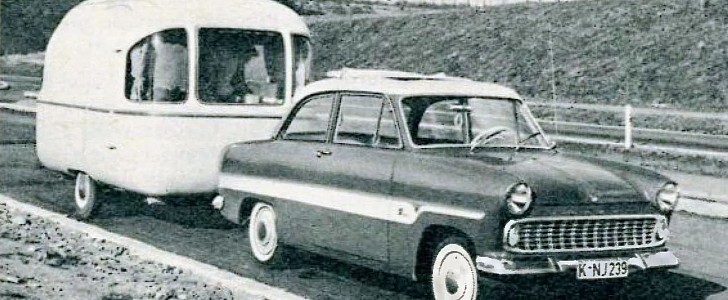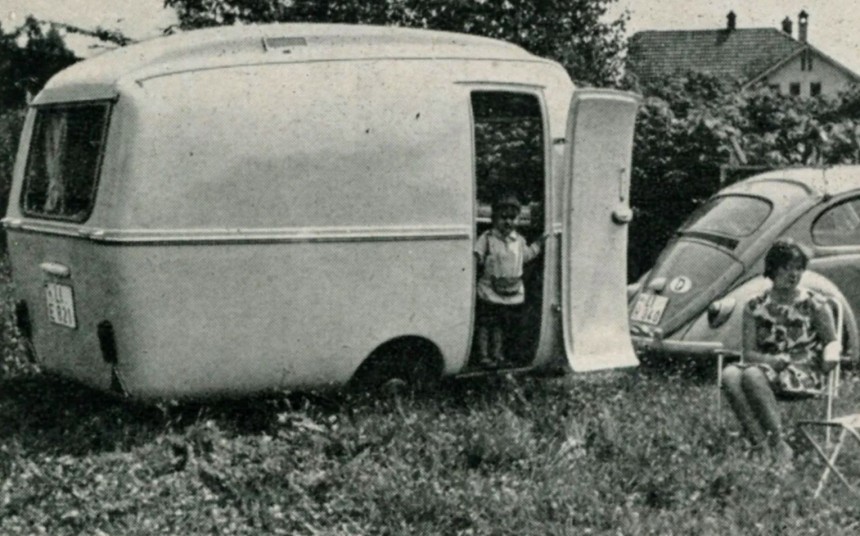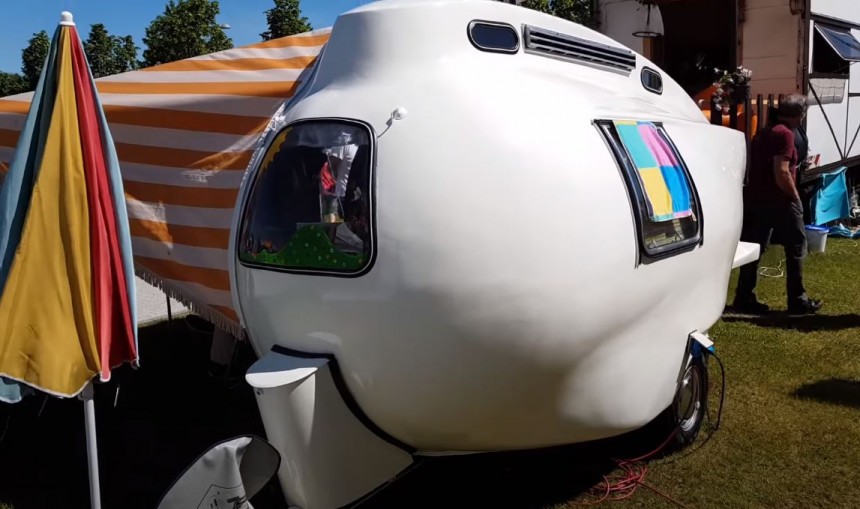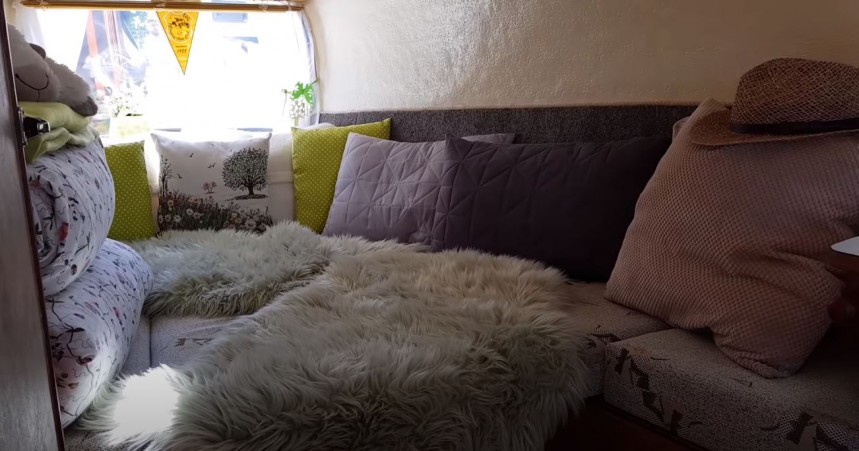It doesn’t do to dwell on the past, but every once in a while, a trip down memory lane can help to show that there are more options available than we initially thought. When it comes to trailers, a Maly Fahti could be an affordable and comfortable option – assuming one comes along, and you’re game for some work before setting off.
The 2020 international health crisis, especially the travel restrictions it prompted, breathed new life into the RV movement. Not that it was stalling before; but being forced to choose other means of travel and to do so within a country’s borders convinced more people to give RVing a try. RVs, overlanders and tiny homes are having quite a moment, and that’s to the benefit of all those involved.
Back in the late ‘50s, one man from Germany set out on a mission to create the perfect trailer for families, regardless of budgets and needs. Given the current context of heightened interest in RVs, now’s a good time to revisit the Maly Fahti, the iconic egg-shaped trailer you probably have never heard before.
That man was Franz U. Maly who, according to an Auto Motor Sport feature dated May 1961, aimed to deliver practicality and comfort in as compact footprint as possible. To that end, Maly created the Maly Fahti, which would eventually be sold in three variants to cover all needs and budgets, but the goal was the same with all three: to deliver a single-axle caravan that would be a home on the road but still lightweight, so that families wouldn’t have to switch towing vehicles.
Maly produced the first trailer of the kind in 1957, using glass-fiber-reinforced plastic (GRP) for the shell, at a time when it was still a novelty. It was called the Fahti 600 Luxus, and was a premium caravan that would soon be followed by a standard version (Fahti 400 Junior) and the super-premium one (Fahti 800). By the time the Fahti 400 was introduced, Maly had already outsourced production of the caravans, and it continued until the end of 1969. Some 570 units were produced in total, of which many have survived in various conditions: the most famous one is the 400 model on display at the Erwin Hymer Museum that is also shown in the video at the bottom of the page.
The Fahti was also called Windspiel and, at the time of its introduction and despite massive popularity, was criticized for its egg shape, one that would be described as retro-futuristic today. But as the Auto Motor Sport review noted in ‘61, if this was an egg shape, it was neither accidental nor accurate: Maly had come up with it because he worked with polyester, wanted to offer standing space and interior volume, and maximum functionality. In doing so, he had created a “formula [that] will be valid for a long time to come” and “perhaps even dominate the market in the future,” the review said. Bittersweet praise, in hindsight.
Differences between the three versions of the Fahti were minor and consisted mostly of a larger shell and a different layout. Initial production units were offered with single-walled shells, but insulation was added later, by means of a 10-mm (0.4-inch) thick Moltopren foam layer, covered with artificial leather. The smallest version slept two adults or a family with two young kids (if they didn’t mind cuddling tight at night), while the larger one could sleep up to six people and they still had enough room to change in the morning.
There was a kitchen with refrigerator (either a cooling drawer or a proper fridge, depending on model), sink with manual pump, single or dual-burner gas stove, and cooking surface. There was also a wardrobe (with shelves and mirror included), cabinetry, and storage throughout, as well as a dining table and a day bed.
The Fahti 400, for example, had the kitchen in the front area, with the panoramic plexiglass window offering natural light and ventilation. The dining area was in the middle, with a bed in the rear and another panoramic window. The unit in the video below is a 1962 model and remains mostly original – just one of the 106 produced.
Inside, this model offered a space of 3 x 1.87 meters (9.8 x 6.1 feet), with standing height. Dry weight was of just 330 kg (727 pounds), with maximum permissible weight of 400-450 kg (882-992 pounds). For comparison, the Fahti 800 allowed for a maximum weight of 600 kg (1,323 kg), in addition to including extra stuff like a heater and additional berths. The difference was also in pricing: the standard version was 4,750 DEM, while the super-premium one was 10,200 DEM, which would be roughly $5,000 and $10,750 but at today’s exchange rate.
In the press at the time, Maly was called the “polyester pope” or the “polyester apostle” because he believed it was the perfect material to build a light, fast, easy and cheap to maintain trailer that would help families enjoy more time on the road together. Production of his Fahti was riddled with problems, but only because he had to outsource it, having not properly anticipated the kind of interest he’d generate. Today, the Maly Fahti, or the Maly Windspiel, is a legend, a sometimes-overlooked icon, and a very rare unicorn.
Back in the late ‘50s, one man from Germany set out on a mission to create the perfect trailer for families, regardless of budgets and needs. Given the current context of heightened interest in RVs, now’s a good time to revisit the Maly Fahti, the iconic egg-shaped trailer you probably have never heard before.
That man was Franz U. Maly who, according to an Auto Motor Sport feature dated May 1961, aimed to deliver practicality and comfort in as compact footprint as possible. To that end, Maly created the Maly Fahti, which would eventually be sold in three variants to cover all needs and budgets, but the goal was the same with all three: to deliver a single-axle caravan that would be a home on the road but still lightweight, so that families wouldn’t have to switch towing vehicles.
The Fahti was also called Windspiel and, at the time of its introduction and despite massive popularity, was criticized for its egg shape, one that would be described as retro-futuristic today. But as the Auto Motor Sport review noted in ‘61, if this was an egg shape, it was neither accidental nor accurate: Maly had come up with it because he worked with polyester, wanted to offer standing space and interior volume, and maximum functionality. In doing so, he had created a “formula [that] will be valid for a long time to come” and “perhaps even dominate the market in the future,” the review said. Bittersweet praise, in hindsight.
Differences between the three versions of the Fahti were minor and consisted mostly of a larger shell and a different layout. Initial production units were offered with single-walled shells, but insulation was added later, by means of a 10-mm (0.4-inch) thick Moltopren foam layer, covered with artificial leather. The smallest version slept two adults or a family with two young kids (if they didn’t mind cuddling tight at night), while the larger one could sleep up to six people and they still had enough room to change in the morning.
The Fahti 400, for example, had the kitchen in the front area, with the panoramic plexiglass window offering natural light and ventilation. The dining area was in the middle, with a bed in the rear and another panoramic window. The unit in the video below is a 1962 model and remains mostly original – just one of the 106 produced.
Inside, this model offered a space of 3 x 1.87 meters (9.8 x 6.1 feet), with standing height. Dry weight was of just 330 kg (727 pounds), with maximum permissible weight of 400-450 kg (882-992 pounds). For comparison, the Fahti 800 allowed for a maximum weight of 600 kg (1,323 kg), in addition to including extra stuff like a heater and additional berths. The difference was also in pricing: the standard version was 4,750 DEM, while the super-premium one was 10,200 DEM, which would be roughly $5,000 and $10,750 but at today’s exchange rate.
























